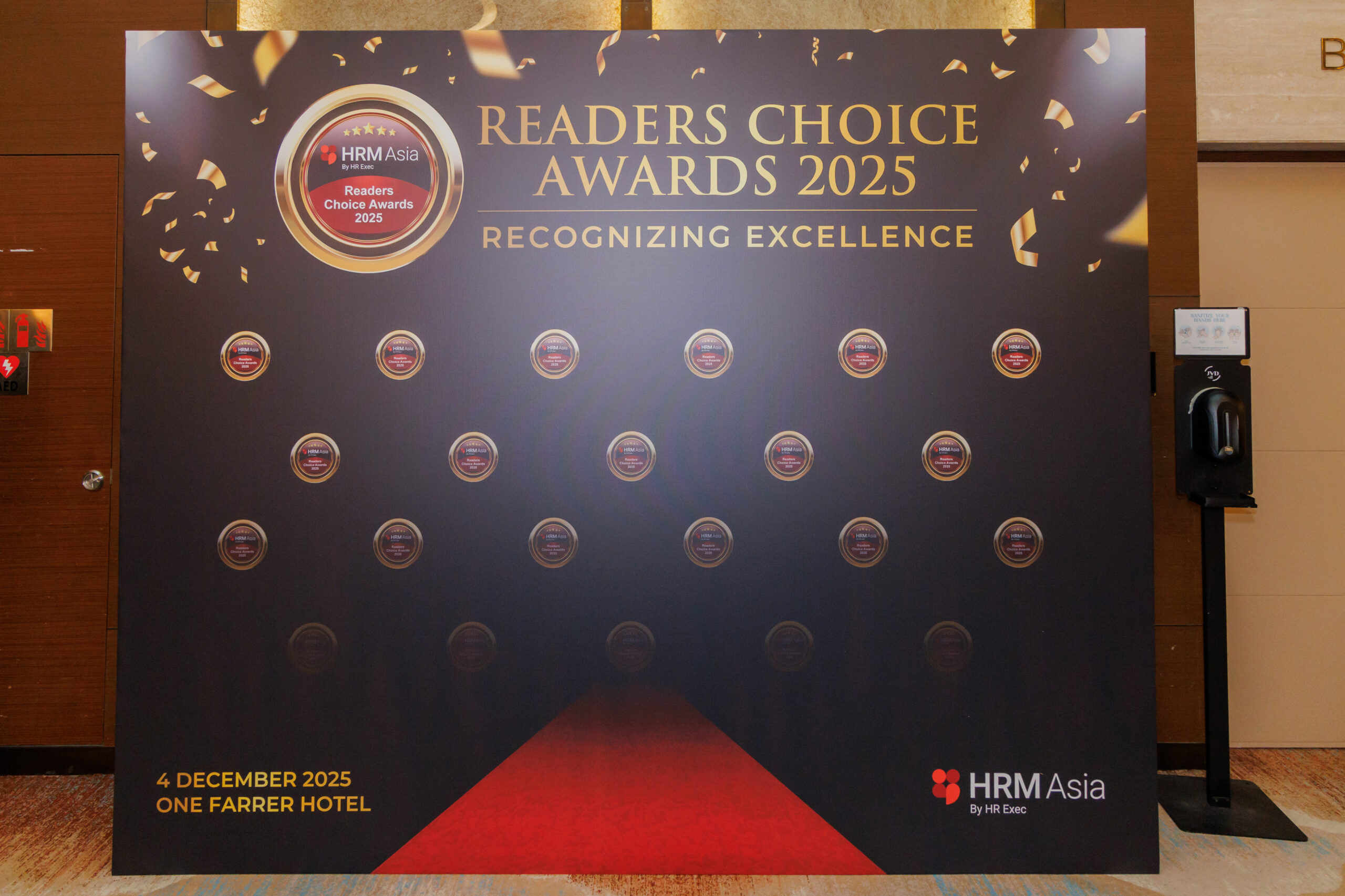Why CHROS are focusing on human capital management in 2023
- Shawn Liew

From left to right: Kim Chua, Director of Student Access, Embry-Riddle Aeronautical University; Low Peck Kem, CHRO & Advisory (Workforce Development), Public Service Division, Prime Minister’s Office Singapore; and Angelina Chua, Head of People & Culture, Asia Pacific South, SIG Group, discussed how organisations can manage a multi-generational workforce at CHRO Series Singapore.
As CHROs, do you have a talent management strategy in place to identify the high potential employees that will help bring your organisation to new heights in 2023?
With this thought-provoking question, Alvin Goh, Executive Director, Singapore Human Resources Institute and Shree Mogan, Council Member, ASEAN Human Development Organisation (AHDO), set the stage for delegates at CHRO Series Singapore to take a deep dive into the key trends that are likely to impact the workplace in 2023.
People do not leave organisations, they leave people, Goh and Morgan highlighted. The onus thus, is on organisations to create two-way communication with employees that empower the latter to give their best at work. Look beyond compensation when it comes to talent retention and offer learning opportunities that address the needs of every employee, they added.
The future of work has arrived, and it is borderless, agile, skills-based, data-driven, and is always-on, said Rob Squires, VP Regional Head, Asia and Japan, Ceridian.
The new focus for HR leaders, he added, is value creation in three areas: financial, workforce, and culture. Financial value creation includes revenue generation and cost containment, which focuses on how the workforce is managed.
Workforce value creation includes talent retention, creating nimbleness and agility; and culture value creation, which Squires emphasised must start with the executive suite, includes creating diversity and sustainability through flexibility in job roles and responsibilities, and the ability to manage unethical or illegal employee actions quickly.
Organisations are increasingly using technology to create better candidate experiences and to turn hiring into a competitive advantage, shared David Harden, Senior Vice President, Client Success, Paradox.
He shared the example of Ev-e, a conversational AI assistant that Paradox helped General Motors roll out to automate interview scheduling, improve candidate experiences, and represent General Motors’ brand and culture.
Less than a year after Eve’s introduction, General Motors has scheduled more than 50,000 interviews, reduced the time to schedule interviews from five days to 29 minutes on average, and resulted in direct cost savings of more than US$2 million.
In managing a multi-generational workforce, find commonality among employees, said Kim Chua, Director of Student Access, Embry-Riddle Aeronautical University, who moderated a panel discussion that included Low Peck Kem, CHRO & Advisory (Workforce Development), Public Service Division, Prime Minister’s Office Singapore, and Angelina Chua, Head of People & Culture, Asia Pacific South, SIG Group.
Agreeing with Kim, Peck Kem advised organisations to focus on the similarities between employees and to focus on the job that needs to be done. “Design strategies and manage resources to bring in the people that cab make your organisation successful. Optimise and develop strengths and empower your people to do their best,” she added.
What is your Employee Value Proposition (EVP) and what is the sense of purpose your employees have, Angelina urged organisations to ask themselves. “Introduce a more inclusive approach that creates a sense of belonging so that you can bring different generations of employees together.”
Building a long-term learning culture starts and ends with your people, said Mike Warren, RVP Sales, Asia Pacific, Docebo.
To cultivate learning habits within your organisation, learning must be an integral part of the business journey. Leaders must align learning with corporate objectives, tie learning to goals, develop teams to achieve goals, complete the circle with feedback, and reward success, Warren highlighted.
“Making learning engaging for employees is not just about the content, it’s about the whole system that supports the learning experience. It’s a jigsaw puzzle of technical, experiential, and content pieces that are so much easier to manage with an integrated system,” he added.
Do you know what motivates the people you want to bring into your organisation, asked Associate Professor Brian Stone, College of Design and Engineering, Division of Industrial Design, National University of Singapore.
In sharing how organisations can use the process of experience design, or UX, to address the challenges of finding and onboarding talent, Professor Stone emphasised the importance of empathising with people and to focus on the future.
“Identify the goals of employees and the organisation, and create a process to achieve these goals together,” he said.
With many organisations continuing to prioritise diversity, equity, and inclusion (DE&I), there will be a concerted effort to enhance a culture of respect and inclusion in the workplace, said Dr Vinika D. Rao, Executive Director, INSEAD Emerging Markets Institute, Gender Initiative & Africa Initiative; Asia Director, Hoffmann Global Institute for Business & Society, INSEAD; and Hosea Lai, Senior Director, DE&I, Applied Materials Asia Pacific.
As DE&I continues to evolve, allyship is a critical component for DE&I initiatives to succeed, said Dr Rao and Lai. DE&I, they explained, must not be invisible and is about action, with leaders required to step up and be an ally to different groups of employees.
The Top Employers Institute, which celebrates excellence in people practices, publishes an annual World of Work trends report. The top trend identified by the 2022 report, shared Adrian Seligman, Executive Board Member, Top Employers Institute, is “unleashing the potential of the involved employee.”
Reminding that delegates that an inspired employee is more productive than an engaged employee, he revealed that 83% of Top Employees involve their employees in the design of the organisation and work, up from 77% in 2021.
As employees become more discerning in choosing who they work for, Seligman asked, “Who will you inspire next week to solve stay-awake challenges, knowing that you will be turbo-charging engagement levels?”
Driven by factors such as availability and convenience of platforms for gig workers, increase in demand for services that require gig workers to perform, and rise in importance of flexibility as one of the core factors in jobs, more organisations are beginning to employ a blended workforce, said Lim Huishan, General Manager, Singapore & Philippines, FastCo.
Describing a blended workforce as a combination of employees on different contracts, ranging from full-time, part-time, to contract and gig workers, Lim predicted this to continue to grow as a staff strategy, while acknowledging the challenges of managing a blended workforce.
These, she identified, include existing work processes and training, scheduling, retention of workers, resources to manage, and payroll.
In today’s dynamic employment ecosystem, salary and compensation, work-life balance, flexibility, and career development are all key factors to attract and retain talent, said Chew Siew Mee, Managing Director, and Daniel Peh, Director of Sales, JobStreet Singapore.
Three out of four companies in Singapore, for example, have implemented salary increases for their employee within the last 12 months.
More companies are also offering compassionate, marriage, and birthday leave to encourage work-life balance, and more than eight out of ten companies are providing remote work support to their employees.
Companies that prioritise employees’ work-life balance and career progression are likely to attract more candidates. With employees looking for more career and development opportunities, employers are responding by providing more training and self-learning programmes, Chew and Peh shared.
Rounding up a successful CHRO Series Singapore was a thought-provoking session that predicted some of the key talent trends organisations should pay attention to in 2023.
Moderated by Shenton Sng, Vice President, Human Resources Division, SPH Media, the panel discussion that included Effi Zhang, Head of People, Think Academy International Education, and Jonathan Stewart, Global Head of Talent Acquisition, Enabling Functions, Kantar, highlighted how CHROs need to build agility across their organisations in 2023, and to support strategic plans around their workforce.
This includes understanding business strategies to craft more effective HR strategies, and to create a common skills taxonomy that is robust enough to be used externally and internally, the panel concluded.
HRM Asia’s CHRO Series 2022 will conclude with CHRO Series Malaysia, which is taking place at the Sheraton Imperial hotel in Kuala Lumpur on December 17. Click here for more information and find out how CHROs can help to shape work in 2023 and beyond.






